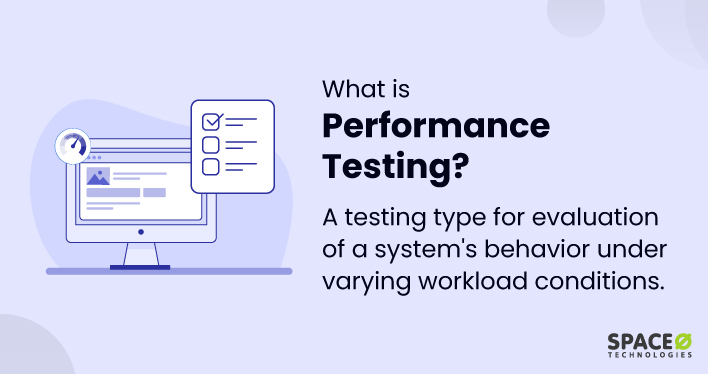Table of Contents
What is Performance Testing?
Performance testing is a type of testing that aims to determine how a system performs in terms of responsiveness and stability under a particular workload. Performance tests involve testing web applications to ensure that web apps perform well under their expected workload.
Performance testing is characterized by the following aspects:
- Speed – Determines whether the application responds quickly.
- Scalability – Determines the maximum user load the software application can handle.
- Stability – Checks if the application is stable under varying loads.
For a comprehensive understanding of how to improve and maintain your web application’s performance, you can check out our detailed web application performance testing guide. After reading this guide, you will have a deeper understanding of the steps to perform performance testing, it’s importance, and its critical role in ensuring an excellent user experience.
Metrics of Performance Testing
In the performance testing process, various key performance indicators (KPIs) are monitored to evaluate a web application’s scalability, speed, and stability under different loads. These metrics are crucial in gauging system performance and are typically gathered using specialized performance testing tools. Here are some of the most important key metrics in performance testing:
- Response Time: This is the time taken by an application to respond to a user’s request, from receipt to processing and finally returning the response to the user.
- Throughput: This metric shows the number of requests an application can handle in a specific timeframe during a performance test. A higher throughput usually indicates better application performance.
- Load Volume: This gauges the number of concurrent users or requests an application can handle without performance degradation.
- Resource Utilization: This assesses the amount of resources (CPU, memory, disk I/O, network I/O, etc.) consumed by the application during its execution.
- Latency: This measures the total time it takes for a data packet to travel from one point to another in a network. Lower latency is an indicator of better performance during the performance testing process.
- Scalability: This metric reflects an application’s ability to handle additional load by proportionally increasing resource usage.
- Error Rate: This is calculated as the number of errors encountered during a test run divided by the total number of requests sent.
Each of these metrics contributes to a comprehensive understanding of an application’s performance. In addition to these key metrics, there are several types of performance testing that are integral to the performance testing process:
- Load Testing: This involves simulating a large number of users accessing the application simultaneously in the test environment to see how the system handles high demand during load tests. Want to know more about load testing? Check this post on what is load testing and learn about load testing benefits and tools.
- Stress Testing: This is where the application is tested under extreme workloads to find its breaking point or performance bottlenecks.
- Endurance Testing: This involves testing the system with a significant load extended over a long period of time, typically in the performance testing environment, to discover how it behaves under sustained use.
- Spike Testing: Involves suddenly increasing or decreasing the load generated by users to measure the responsiveness of the application under such fluctuating conditions.
- Scalability Testing: This test determines the application’s ability to handle the increased load, simulating real-world scenarios in the production environment.
These performance tests provide valuable insights into the application’s performance and help identify areas for improvement.
Which Key Factors are Tested During Performance Testing?
The following factors are tested during performance testing:
- User Load Handling: Checks how the system can handle multiple users simultaneously. This is crucial for applications expecting high traffic.
- System Speed: Measures the response time of the system, i.e., the time taken by the system to respond to a user’s request.
- Stability: It checks the robustness and reliability of the system under different load conditions.
- Scalability: It verifies whether the system can scale to handle an increased load. This is particularly important for growing businesses.
- Resource Usage: It monitors the usage of system resources such as CPU, memory, disk I/O, and network I/O, under different load conditions.
- Bottleneck Identification: Performance testing can help identify any bottlenecks in the system that could degrade its performance.
- Realistic User Simulation: Performance testing tools allow for simulating real-world user behavior patterns, which leads to more accurate and useful results.
- Resilience under Stress Conditions: Through stress testing, a subset of performance testing, it’s possible to evaluate how the system behaves under extreme conditions.
- Measuring Throughput: It also measures the throughput or the rate at which a system can process tasks, providing an idea of its efficiency.
These factors of system performance testing work together to ensure that the system can handle anticipated user loads and provide a satisfactory user experience.
In conclusion, performance testing is vital for verifying a system’s reliability, speed, and stability under specific workloads. Through rigorous load testing, spike testing, endurance testing, and scalability testing in a representative performance testing environment, organizations can optimize their systems, identify bottlenecks, and ensure a seamless user experience.







